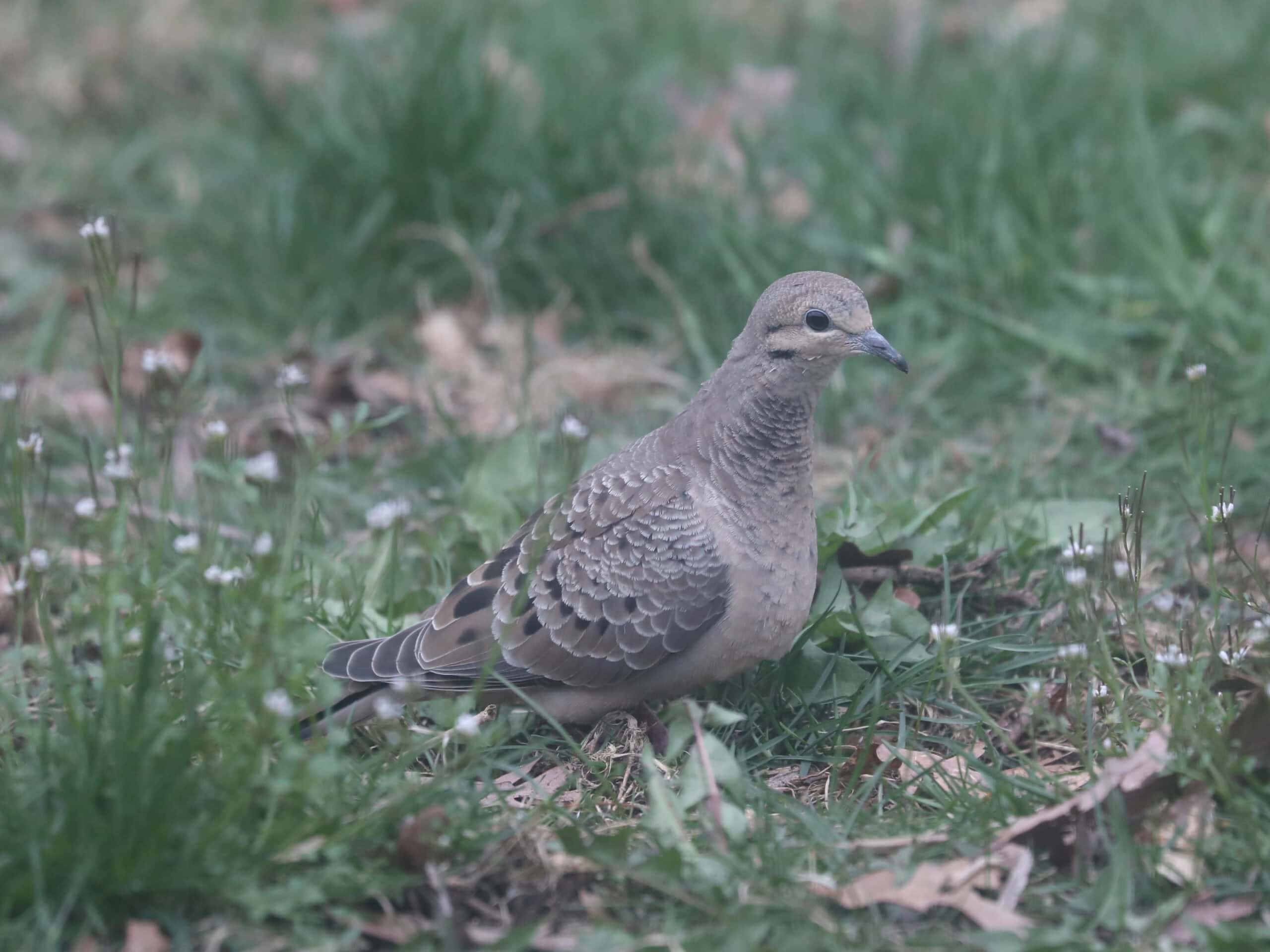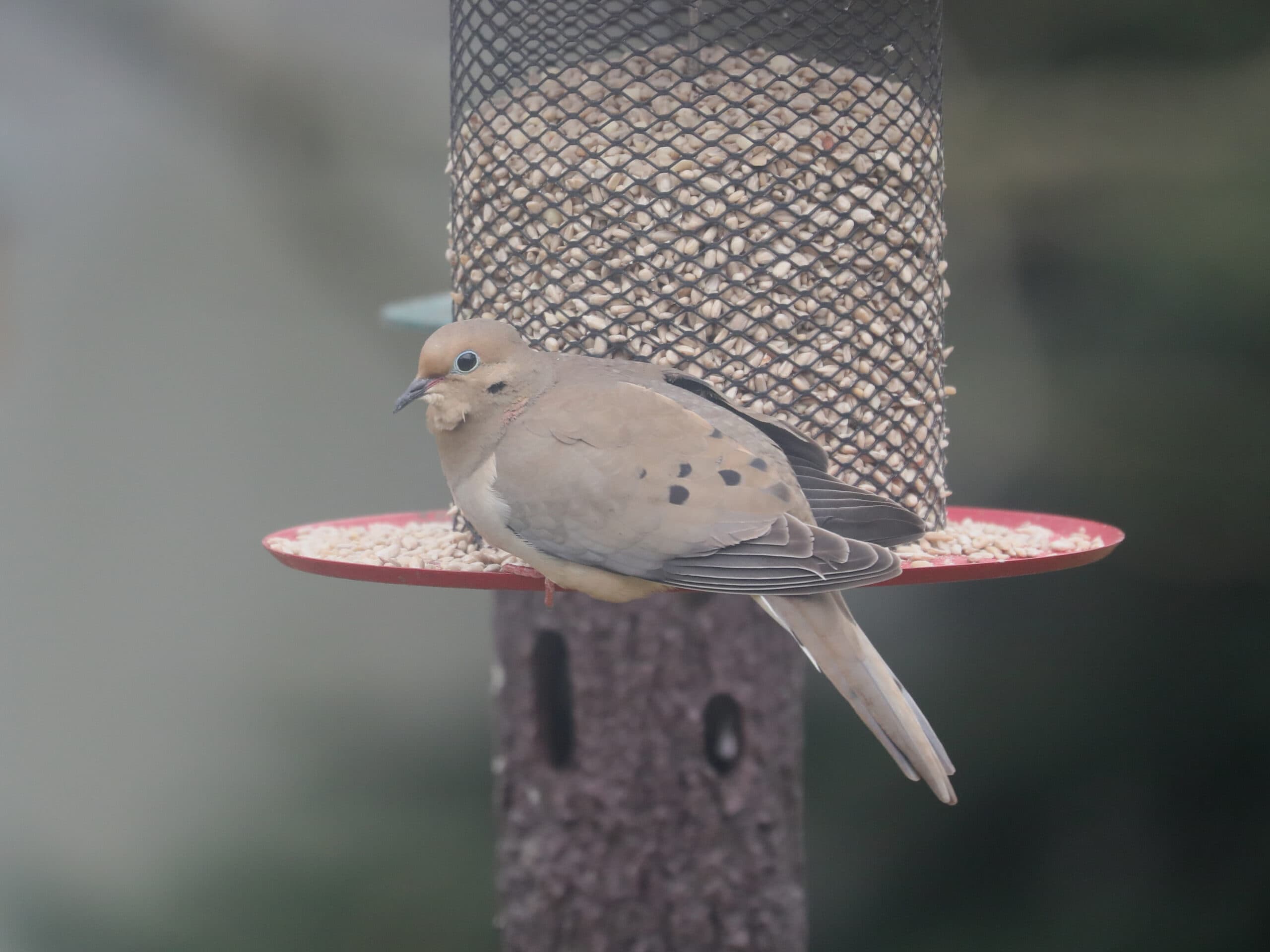Mourning Doves
I came across a juvenile Mourning Dove this week in my yard. It had only been a day or two since it left the nest. You can recognize the juvenile in the photo above (versus the adult in the photo below) by its scaly, ruffled appearance. Adults have feathers that are more evenly grown without lighter edging to the feathers, giving them a more sleek, clean look. If you saw them side-by-side, you’d also notice that the juvenile’s tail is shorter.
Mourning Doves are common across the mainland United States, as well as in southern Canada and Mexico. During the winter they’re also found in most parts of Central America. We see them all year in the Susquehanna Valley, where they are the only native species in the pigeon family, not counting the extinct Passenger Pigeon. Rock Pigeons, also known as “city pigeons” are native to Europe, Asia, and northern Africa.
Surprisingly for such common, widespread birds, Mourning Doves have a remarkably short average lifespan. While many songbirds like cardinals and goldfinches often live for three to five years, the average lifespan of a Mourning Dove is only about one year. They make up for a short lifespan by producing lots of young doves – they start nesting earlier than most small birds and continue nesting into late summer and early fall when almost all birds have started migrating or preparing for the winter. During the nesting season, they lay two eggs at a time, and they can start a new nest every month.
Mourning Doves
I came across a juvenile Mourning Dove this week in my yard. It had only been a day or two since it left the nest. You can recognize the juvenile in the photo above (versus the adult in the photo below) by its scaly, ruffled appearance. Adults have feathers that are more evenly grown without lighter edging to the feathers, giving them a more sleek, clean look. If you saw them side-by-side, you’d also notice that the juvenile’s tail is shorter.
Mourning Doves are common across the mainland United States, as well as in southern Canada and Mexico. During the winter they’re also found in most parts of Central America. We see them all year in the Susquehanna Valley, where they are the only native species in the pigeon family, not counting the extinct Passenger Pigeon. Rock Pigeons, also known as “city pigeons” are native to Europe, Asia, and northern Africa.
Surprisingly for such common, widespread birds, Mourning Doves have a remarkably short average lifespan. While many songbirds like cardinals and goldfinches often live for three to five years, the average lifespan of a Mourning Dove is only about one year. They make up for a short lifespan by producing lots of young doves – they start nesting earlier than most small birds and continue nesting into late summer and early fall when almost all birds have started migrating or preparing for the winter. During the nesting season, they lay two eggs at a time, and they can start a new nest every month.
About The Author
Dan Hinnebusch is the Ornithologist for Wild Birds Unlimited. Click to learn more.





